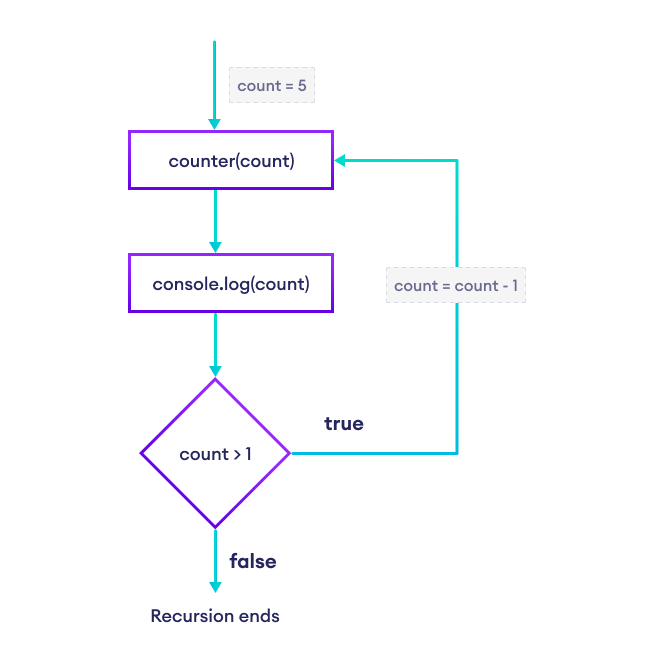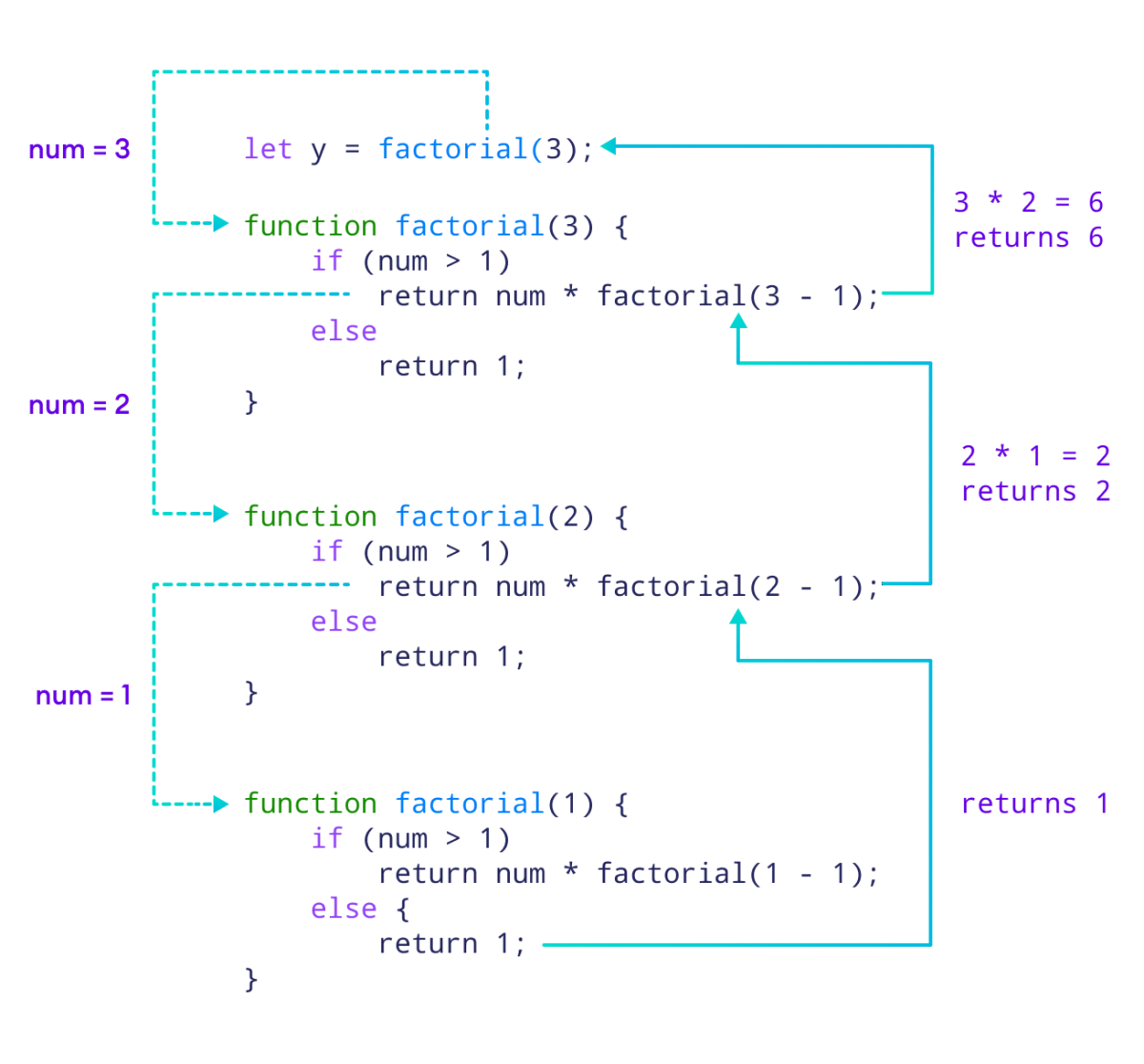Recursion is a programming technique where a function calls itself repeatedly to solve a problem. For example,
// Program to countdown till 1
// recursive function
function counter(count) {
// display count
console.log(count);
// condition for stopping
if(count > 1) {
// decrease count
count = count - 1;
// call counter with new value of count
counter(count);
} else {
// terminate execution
return;
};
};
// access function
counter(5);
Output
5 4 3 2 1
In the above example, we have a function counter() that accepts the argument count, which is the starting point for our countdown till 1.
The counter() function first displays count then checks if the value of count is greater than 1 with count > 1.
If count > 1 evaluates to true, the program decreases the value of count and calls counter() with the new value of count (recursion).
Otherwise, if count > 1 evaluates to false, the program executes the return statement, stopping the recursion.
Here,
- The
counter()function is a recursive function, a function that calls itself recursively. - The
count > 1condition is called a base case, a condition that specifies when the recursion must stop.
Note: Without base cases, a recursive function won't know when to stop, resulting in an infinite recursion (error).

Example: Find Factorial of a Number
Now, let's see an example of how we can use recursion to find the factorial of a number.
// recursive function
function factorial(num) {
// base case
// recurse only if num is greater than 0
if (num > 1) {
return num * factorial(num - 1);
}
else {
return 1;
};
};
let x = 3;
// store result of factorial() in variable
let y = factorial(x);
console.log(`The factorial of ${x} is ${y}`);
Output
The factorial of 3 is 6
Here, the factorial() function calls itself recursively as long as the num variable is greater than 1.
We can divide the overall recursion process into two halves.
The iterations in the first half includes:
| Variable | Base case: num > 1 | Action |
|---|---|---|
num = 3 |
true |
factorial(3) returns 3 * factorial(2) |
num = 2 |
true |
factorial(2) returns 2 * factorial(1) |
num = 1 |
false |
factorial(1) returns 1 |
factorial(3)returns3 * factorial(2)and waits forfactorial(2)to compute.factorial(2)returns2 * factorial(1)and waits forfactorial(1)to compute.factorial(1)doesn't pass the base case, so it directly returns 1.
After that, the second half takes place in reverse:
factorial(1)returns 1.factorial(2)returns2 * factorial(1). Sincefactorial(1)returned 1,factorial(2)returns2 * 1 = 2.factorial(3)returns3 * factorial(2). Sincefactorial(2)returned 2,factorial(3)returns3 * 2 = 6.
Finally, the returned value from factorial(3) is stored in the result variable.

More on JavaScript Recursion
Yes, JavaScript does have a recursion limit.
The recursion limit prevents errors caused by too many nested function calls.
However, the limit varies depending on the JavaScript engine and the environment in which the code is running.
For instance, the maximum limit can differ between Firefox and Chrome. Whereas, devices with higher memory might have higher recursion limits than devices with less memory.
When there is no base case in a recursive function, it runs infinitely, resulting in an infinite recursion. For example,
// recursive function
function greet() {
// display "Hello"
console.log("Hello");
// call itself
greet();
};
// access function
greet();
Output
Hello Hello Hello ... RangeError: Maximum call stack size exceeded
Here, we have a recursive function greet() without a base case.
As you can see, greet() keeps calling itself until the program runs into an error (RangeError).